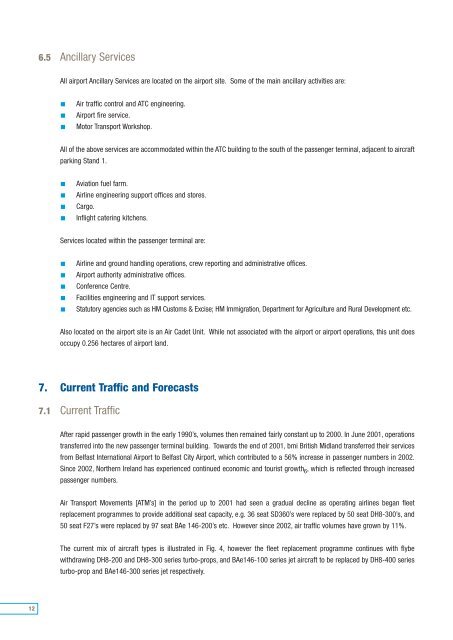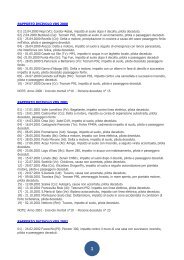You also want an ePaper? Increase the reach of your titles
YUMPU automatically turns print PDFs into web optimized ePapers that Google loves.
12<br />
6.5 Ancillary Services<br />
All airport Ancillary Services are located on the airport site. Some of the main ancillary activities are:<br />
Air traffic control and ATC engineering.<br />
<strong>Airport</strong> fire service.<br />
Motor Transport Workshop.<br />
All of the above services are accommodated within the ATC building to the south of the passenger terminal, adjacent to aircraft<br />
parking Stand 1.<br />
Aviation fuel farm.<br />
Airline engineering support offices and stores.<br />
Cargo.<br />
Inflight catering kitchens.<br />
Services located within the passenger terminal are:<br />
Airline and ground handling operations, crew reporting and administrative offices.<br />
<strong>Airport</strong> authority administrative offices.<br />
Conference Centre.<br />
Facilities engineering and IT support services.<br />
Statutory agencies such as HM Customs & Excise; HM Immigration, Department for Agriculture and Rural Development etc.<br />
Also located on the airport site is an Air Cadet Unit. While not associated with the airport or airport operations, this unit does<br />
occupy 0.256 hectares of airport land.<br />
7. Current Traffic and Forecasts<br />
7.1 Current Traffic<br />
After rapid passenger growth in the early 1990’s, volumes then remained fairly constant up to 2000. In June 2001, operations<br />
transferred into the new passenger terminal building. Towards the end of 2001, bmi British Midland transferred their services<br />
from <strong>Belfast</strong> International <strong>Airport</strong> to <strong>Belfast</strong> <strong>City</strong> <strong>Airport</strong>, which contributed to a 56% increase in passenger numbers in 2002.<br />
Since 2002, Northern Ireland has experienced continued economic and tourist growth6 , which is reflected through increased<br />
passenger numbers.<br />
Air Transport Movements [ATM’s] in the period up to 2001 had seen a gradual decline as operating airlines began fleet<br />
replacement programmes to provide additional seat capacity, e.g. 36 seat SD360’s were replaced by 50 seat DH8-300’s, and<br />
50 seat F27’s were replaced by 97 seat BAe 146-200’s etc. However since 2002, air traffic volumes have grown by 11%.<br />
The current mix of aircraft types is illustrated in Fig. 4, however the fleet replacement programme continues with flybe<br />
withdrawing DH8-200 and DH8-300 series turbo-props, and BAe146-100 series jet aircraft to be replaced by DH8-400 series<br />
turbo-prop and BAe146-300 series jet respectively.



